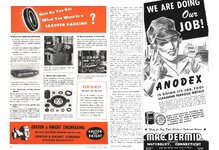BarnOwlLover
Staff Sergeant
Any info or thoughts on the Aeorlite Spitfire, which was an attempt to build a Spitfire fuselage out of Aerolite, which was resin impregnated fiber that was a predecessor to carbon fiber/carbon fiber reinforced plastic. It wasn't mass produced, but was done to see if it could be done if there was a critical shortage of aluminum that could be used to make aircraft structures.
I've seen it referred to in a couple of threads, but not discussed in detail.
I've seen it referred to in a couple of threads, but not discussed in detail.

